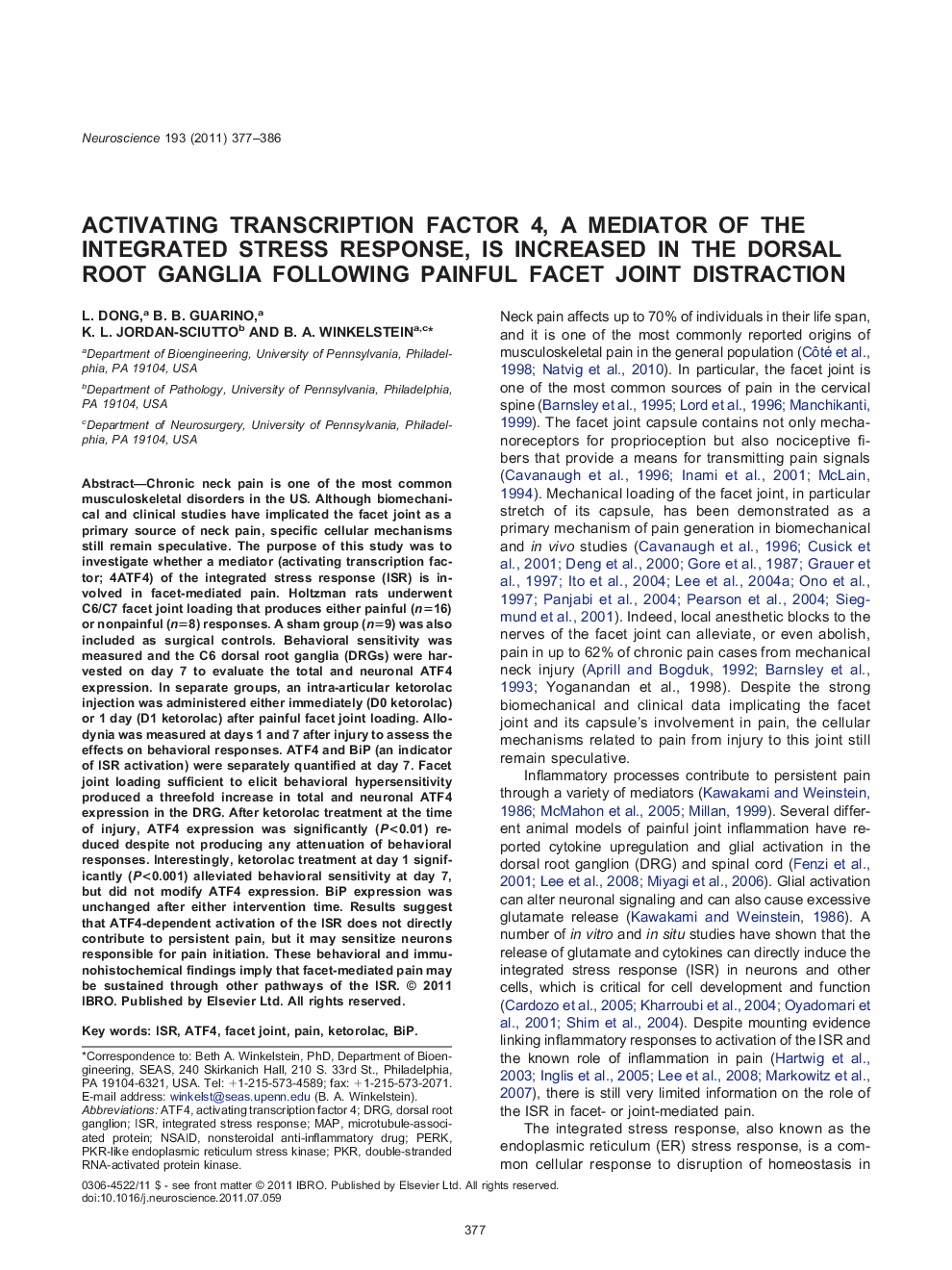| Article ID | Journal | Published Year | Pages | File Type |
|---|---|---|---|---|
| 4338766 | Neuroscience | 2011 | 10 Pages |
Chronic neck pain is one of the most common musculoskeletal disorders in the US. Although biomechanical and clinical studies have implicated the facet joint as a primary source of neck pain, specific cellular mechanisms still remain speculative. The purpose of this study was to investigate whether a mediator (activating transcription factor; 4ATF4) of the integrated stress response (ISR) is involved in facet-mediated pain. Holtzman rats underwent C6/C7 facet joint loading that produces either painful (n=16) or nonpainful (n=8) responses. A sham group (n=9) was also included as surgical controls. Behavioral sensitivity was measured and the C6 dorsal root ganglia (DRGs) were harvested on day 7 to evaluate the total and neuronal ATF4 expression. In separate groups, an intra-articular ketorolac injection was administered either immediately (D0 ketorolac) or 1 day (D1 ketorolac) after painful facet joint loading. Allodynia was measured at days 1 and 7 after injury to assess the effects on behavioral responses. ATF4 and BiP (an indicator of ISR activation) were separately quantified at day 7. Facet joint loading sufficient to elicit behavioral hypersensitivity produced a threefold increase in total and neuronal ATF4 expression in the DRG. After ketorolac treatment at the time of injury, ATF4 expression was significantly (P<0.01) reduced despite not producing any attenuation of behavioral responses. Interestingly, ketorolac treatment at day 1 significantly (P<0.001) alleviated behavioral sensitivity at day 7, but did not modify ATF4 expression. BiP expression was unchanged after either intervention time. Results suggest that ATF4-dependent activation of the ISR does not directly contribute to persistent pain, but it may sensitize neurons responsible for pain initiation. These behavioral and immunohistochemical findings imply that facet-mediated pain may be sustained through other pathways of the ISR.
▶Activating transcription factor 4 (ATF4) is significantly upregulated in the DRG at day 7 after painful joint distraction. ▶Intra-articular joint injection using an NSAID (ketorolac), given only at the time of injury (day 0), reversed the ATF4 upregulation but did not modify the behavioral hypersensitivity. ▶Ketorolac, regardless of the timing of treatment, had no effect on BiP expression in the DRG, despite a significantly reduced ATF4 response after day 0 treatment.
